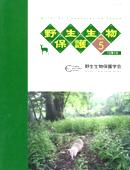Volume 12, Issue 1
Displaying 1-4 of 4 articles from this issue
- |<
- <
- 1
- >
- >|
Original Paper
-
2009 Volume 12 Issue 1 Pages 1-11
Published: 2009
Released on J-STAGE: January 27, 2018
Download PDF (11424K) -
2009 Volume 12 Issue 1 Pages 13-20
Published: 2009
Released on J-STAGE: January 27, 2018
Download PDF (9292K) -
2009 Volume 12 Issue 1 Pages 21-26
Published: 2009
Released on J-STAGE: January 27, 2018
Download PDF (7024K) -
2009 Volume 12 Issue 1 Pages 27-31
Published: 2009
Released on J-STAGE: January 27, 2018
Download PDF (5795K)
- |<
- <
- 1
- >
- >|
